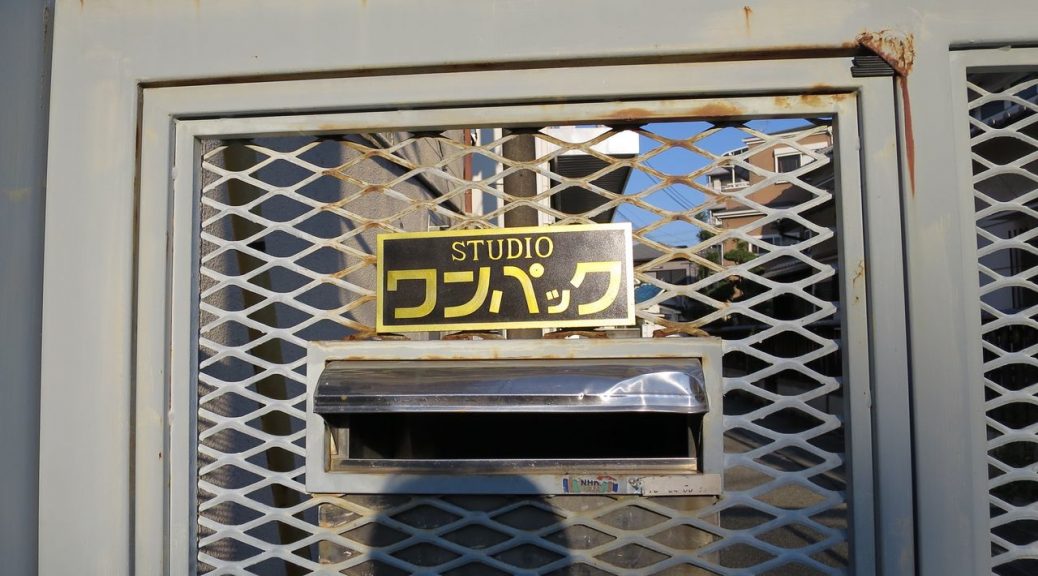
Keeping The Anime Industry Afloat From The Shadows: Wanpack And Outsourcing Studios
It’s no exaggeration to say that outsourcingOutsourcing: The process of subcontracting part of the work to other studios. Partial outsourcing is very common for tasks like key animation, coloring, backgrounds and the likes, but most TV anime also has instances of full outsourcing (グロス) where an episode is entirely handled by a different studio. studios keep anime alive, and yet fans are still mostly unaware of their integral role in the production of their favorite shows. The disappearance of Studio Wanpack, the biggest company of this kind, serves as an opportunity to explain just how important they were, and also what’s been happening to the many animators who worked for them.
Back in the Fall of last year, studio Wanpack updated their portfolio as per usual, listing a few cuts they drew back in August for Amanchu! Season 2 #4. The show hadn’t even been announced at that point, effectively leaking its existence through a combination of director Junichi Sato’s busy schedule and the company’s well-documented issues keeping industry secrets under wraps. An amusing little incident that took a more somber turn with time, as the broadcast of that episode this week may be one of the last instances of Wanpack’s name attached to a new anime. The demise of the studio has been no doubt tragic, but it also serves as an opportunity to clarify some doubts many fans seem to have – what was Wanpack like, why did it play an integral role keeping anime afloat, and what’s happened to their staff members after it closed down? But perhaps most importantly, first we have to tackle a more fundamental matter: what is an outsourcingOutsourcing: The process of subcontracting part of the work to other studios. Partial outsourcing is very common for tasks like key animation, coloring, backgrounds and the likes, but most TV anime also has instances of full outsourcing (グロス) where an episode is entirely handled by a different studio. anime studio?
Though the most common mindset is still to attribute the entirety of an anime’s production to a single studio, that couldn’t be further from the truth; as anyone who’s ever paid attention to ending credits can attest, there’s an outrageous number of companies listed in right about every episode of anime you watch nowadays, with roles ranging from minor work to having substantially greater input than the main studio that fans often believe to be the be all end all. Among those assistance credits you’ll find pretty much every major anime production company, since cooperation is the norm in this industry, but also a much larger contingent that tends to get ignored: outsourcingOutsourcing: The process of subcontracting part of the work to other studios. Partial outsourcing is very common for tasks like key animation, coloring, backgrounds and the likes, but most TV anime also has instances of full outsourcing (グロス) where an episode is entirely handled by a different studio. studios. These support crews are entrusted with fragments of other people’s workload – a few cuts of animation, backgrounds to paint, some digital work, or perhaps the whole manufacturing process of multiple episodes in a show – which they handle not as a side gig but as their bread and butter. There’s specialized crews (often focusing on backgrounds and digital tasks, since many studios lack those departments), but also hundreds of subcontracting groups that more or less resemble the structure of a standard studio. No matter their area of expertise though, what doesn’t change is that these people do a thankless job that’s very much vital in the current overworked industry, where major studios couldn’t finish any project without extensive help. While it comes down to ignorance rather than malice, that reductionist attitude that leads fans to believe anime are single-handedly produced by one company has led to a situation where the fandom only sees the tip of the iceberg when it comes to anime studios. And as shiny as that tip can be, we shouldn’t forget that it would have melted long ago without the massive chunk of ice supporting it from below.
The importance of regularly assisting studios with tons of busywork can’t be understated, but these support crews often handle major tasks as well. The more robust animation-oriented ones will often become key parts of the production rotation of high-profile long-running anime, becoming responsible for the whole manufacturing process of many episodes, including climactic moments. They’ll be in charge of providing all the animation, supervising it, directing the whole affair and in rare occasions even storyboarding it, essentially giving them full control. Studio Guts episodes keep on becoming highlights in multiple Toei Animation titles, just like how Nakamura Pro’s outings in the past offered some of the best hand drawn mechanical animation in the whole industry. In similar fashion, art studios can be key players in the projects they’re involved with; the breathtaking traditional paintings of the staff at renowned Studio Pablo are an example people keep going back to and for good reason, but this year’s Hakumei and Mikochi is a very interesting case because art company Kusanagi was given equal billing to animation studio Lerche, proving just how important their work was deemed to the series as a whole.
If that still isn’t enough to bring you to care about all these studios, keep in mind that being a support crew isn’t a definitive state, and that your favorite anime studio most likely started helping out others as well; ufotable’s official debut was CGi work on Gundam SEED, Kyoto Animation began with painting and spent decades assisting others until they became one of the greatest support studios anime’s ever seen, and although the cache of TRIGGER’s founders got them an original project greenlit very fast, they still spent a while handling outsourced episodes of A-1 series like Idolmaster, Magi, and Sword Art Online. And as commendable as their desire to start creating things of their own was, so is the decision to stay as a supporting entity that many others have taken, especially when it’s deliberate and not just a consequence of failing to secure funds for your projects. It would be unreasonable to ask fans to begin paying attention to every single one of these companies, but raising awareness of the general existence of the bulk of studios that do the majority of work in anime can only have positive consequences. It’ll let you engage with anime in a more respectful way, and give you a better grasp of how your favorite titles came to be.
With that out of the way, we can finally start talking about what Wanpack represented for the anime industry. They had become an important regular contributor to iconic series like Detective Conan, a clutch ally for historic studios like Toei and Sunrise, an equally valuable asset for the productions at animation powerhouses like BONES and ufotable, as well as the literal lifeline of studio WIT ever since they rescued Attack on Titan from absolute doom. Under stable circumstances they were well-valued by their peers, and though their quality when dealing with truly chaotic situations was likely to take a hit, everyone kept on relying on the studio since there was the certainty that they would deliver the work. Throughout their almost 25 years of history they also raised a large number of noteworthy animators: Sunrise’s current 2D mecha leader Hiroshi Arisawa, rising effects star Takashi Mitani, action expert turned director Tetsuya “startoy” Wakano, and studio GoHands’ regular main animator Takayuki Urada, just to name a few. But perhaps the most illustrative point when it comes to their importance is the sheer volume of their output – studio Wanpack had worked on over a thousand titles, appearing in about 40 different anime in 2018 despite being operative for a very short time this year. They had become an animation house with no equal in the entirety of Japan so their loss is significant, even beyond the personal tragedy that caused it.
I chose to refer to them as an animation house there because another key aspect of Wanpack was their very specific focus. With about 80 staff members and housing up to 100 people at some points, they were already quite big when compared to other studios in the business… but when you consider that almost every single one of them was a key animator, that puts them above essentially any other anime studio in that regard. A handful of them were also capable of drawing storyboards, directing and supervising, but the studio’s goal was to get titles animated, which at the end of the day represents the bulk of the work. When we talk about fully outsourced episodes we refer to the entire production process being subcontracted to another company, but despite fully animating countless episodes and even having creative control over a bunch, Wanpack very rarely did that. With barely any managing staff at their disposal, they were a genuine army of animators for hire. Being aware of their very particular nature is very important if you want to understand why, following the death of their representative Koji Yamada, they almost immediately closed down their business. Some members have gone on to say that the studio wouldn’t have been the same without his presence, but more specifically, he was one of the very few people around to actually manage the studio. Unlike regular anime companies employing many production staff, Wanpack was a very large animation crew almost singlehandedly supervised by one man. Once he was gone, the studio couldn’t carry on.

Following Yamada’s death, Wanpack issued a statement that their company would cease to be on February 28. People from all around the industry thanked the studio for their services, and the question of what would happen began to arise. Their equipment was given away to animators for free, but of course the biggest mystery was where all their staff would go, and how would the massive workload they used to handle be split. While the latter is still unclear and the true repercussions of the company’s disappearance will only become obvious later this year, we’ve gone and tracked Wanpack’s many animators after they lost their workplace. The results are very telling: though a few are now affiliated with other support studios like Art Base Bam, most of them have gone fully freelance, as is the norm in anime. They’ve been showing up in projects by studios that were regularly linked to Wanpack, like A-1, SHAFT, and BONES, as well as productions in dire need of help like Golden Kamuy. Though the timing hasn’t allowed it to happen quite yet, it’s to be expected to see a big contingent of them move on to work with studio WIT as well, since they were already integral to their survival. Perhaps we’ll also see a significant number of them move to Atelier CoCo, a recently founded Kansai studio created by ex-Wanpack animator Kazuaki Imoto, who aims to train aspiring animators as well.
And as nice as that initiative might be, it also brings to mind the most worrying issue highlighted by that data: almost every single young ex-Wanpack animator is struggling to find work. While the more experienced ones had already built trust relationships of their own, the newcomers relied on Wanpack’s constant influx of requests to get work assigned, so now they’re having a hard time getting contracts despite anime’s shortage of manpower. Though at first glance it seemed like Wanpack closing down would impact anime production on a large scale, which it still might, the first tangible problem we’ve seen is on a much more personal level, hurting a collective like young animators who already struggle to begin with. Ensuring that newcomers get a stable source of requests is yet another important function of anime studios, and as we’ve already established, most of them are outsourcingOutsourcing: The process of subcontracting part of the work to other studios. Partial outsourcing is very common for tasks like key animation, coloring, backgrounds and the likes, but most TV anime also has instances of full outsourcing (グロス) where an episode is entirely handled by a different studio. companies rather than studios spearheading projects.
This is a bit of a sad story that ends with no solution to offer, as there’s little fans can do to help them out. What we can do however is try to think more about the many studios that collaborate to bring anime to fruition, especially the many companies that do so from the shadows. Without their thankless job, the industry would have collapsed long ago. And that deserves some appreciation at least.
Support us on Patreon to help us reach our new goal to sustain the animation archive at Sakugabooru, SakugaSakuga (作画): Technically drawing pictures but more specifically animation. Western fans have long since appropriated the word to refer to instances of particularly good animation, in the same way that a subset of Japanese fans do. Pretty integral to our sites' brand. Video on Youtube, as well as this SakugaSakuga (作画): Technically drawing pictures but more specifically animation. Western fans have long since appropriated the word to refer to instances of particularly good animation, in the same way that a subset of Japanese fans do. Pretty integral to our sites' brand. Blog. Thanks to everyone who’s helped out so far!


Seems like the real bottleneck here is to solve why these young animators can’t get jobs even though there is a severe lack of manpower. Wonder if this is a stigma issue.
I’d argue it’s more the relationships directors and studios have with animators. It’s why we keep seeing the same dozen or so studios in most animation support roles these days.
It’s not so much an inability to find work at all, but struggling to find work that is worth it at all as an individual who’s just arrived as opposed to an industry institution like Wanpack. It’s not like the studio ensured juicy contracts (a certain someone was glad this meant they’d stop working on Conan despite loving the series, since it apparently paid poorly), but it definitely was easier than going solo as a newbie. That said, I definitely don’t think bottlenecks are ever *the* problem with this industry. Anime is terribly inefficient in many ways, but that’s not… Read more »
I suspect its largely a communication issue. It used to be that studios needing help could just call Wanpack, who would distribute it to their skilled members. Once Wanpack was gone, this link is broken. The studios needing help would not know how to reach these young but skilled craftsmen whose help they need.
Great work that you did there, its a very sad story seen an studio closing down after the dead of his leader.
About the outsourcing studies, i started to noticed back when naruto was streaming. At the end credits of all episodes always showing up studios fromm Korea/China.
After that i started to point more atention at the ending credits of the animes, and i could see that really many studies worked on each of episode and even on the openings and endings.
“After that i started to point more atention at the ending credits of the animes, and i could see that really many studies worked on each of episode and even on the openings and endings.” I noticed that too, like say, WIT or A-1’s OPs and EDs with their in-between and paint credits, or something like Twin Star Exorcists having one of their endings done at Studio drop or the 2005 anime DearS having most of its ED animation’s keyframes at Nakamura Pro (as was the case with Dancougar’s first OP). To say nothing about how Magic Bus’s early years… Read more »
I am researching regulary on these studio through various resources like anidb and ann and what i found in my research is there are more than 300 subcontracting studios and every year a new studio is formed this may spoubd weird but its true well i hpave seen many new giants in subcontracting studios like Reboot Co. They receive a lot of request from wit pierrot and many others and a other one named FAI International which is you can see on almost every big title these days it is on credits of AOT since 2013 and its doing in… Read more »